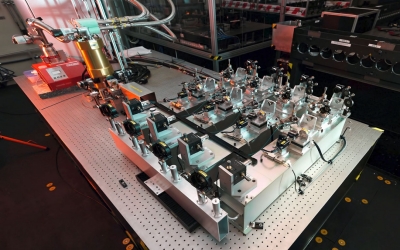Development of an interferometric testbench with pupil phase apodization in view of exo-planet detection
Optical interferometry, a novel technique that can detect and characterize exoplanets, offers unmatched capabilities for obtaining high-quality near-infrared spectra of exoplanets. This technique has unlocked our understanding of the physics and atmospheric compositions of exoplanets.
The main challenge of this PhD project will be improving the dynamic range of this technique, with the ultimate goal of observing exoplanets through their reflected starlight. The approach will involve constructing a laboratory bench to investigate and overcome the current limitations of the GRAVITY instrument at the VLTI. The enhancements could then be tested at the Paranal Observatory at the conclusion of the PhD.
Throughout the PhD, the candidate will build a replica of the PIONIER interferometer on a laboratory bench. The PIONIER instrument, currently operating at the Paranal Observatory, could be upgraded to detect exoplanet light at shorter wavelengths than GRAVITY. The three primary objectives of this project are:
- Measuring the performance of the optical interferometer (contrast accuracy)
- Enhancing the raw contrast using phase apodization in the pupil plane (pupil plane coronagraphy)
- Demonstrating our ability to post-process the interferometric signal to achieve extreme contrast levels

Initially, this laboratory bench will be based on the technology used for the SPICA interferometer. The team will leverage the existing knowledge of the GRAVITY interferometer, including its known limitations and potential for upgrades. The laboratory setup will pave the way for a technical demonstration in the sky using the existing PIONIER feeding optics. The PhD candidate will lead these efforts at ESO, with support from the collaborating team at the Observatory of Paris. If successful, the project could be proposed as an upgrade to the PIONIER instrument.
Keywords:
- Optical Interferometry, Astro-photonics, exoplanet detection
The project will involve the following research and development tasks:
- Simulations, using Zemax and/or other tools, to design the optical configuration of the instrument
- Laboratory work, to install the optical interferometer on the optical bench at ESO Garching
- Characterization of existing and future PICs (Photonic Integrated Circuits) for beam combination
- Programming, for operation of the bench (language to be defined), performance evaluation (Python), and data reduction (Python)
